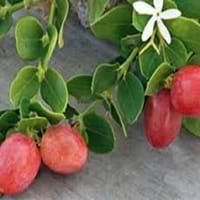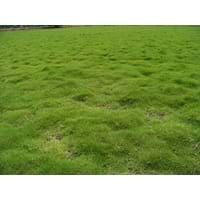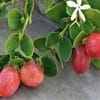Life Span
Perennial
Perennial
Origin
Central Asia, Southern Asia, Western Ghats, India
South-Eastern Asia, Asia
Types
congesta, paucinervia
Korean Lawngrass , Meyer Zoysiagrass , Manilagrass
Habitat
Fertile bottom land, moist forests, Temperate Regions, Tropical Forests
Lower slopes, Sandy stream banks
USDA Hardiness Zone
Not Available
8-11
Sunset Zone
Not Available
H1, H2, 8, 9, 12, 13, 14, 15, 16, 17, 18, 19, 20, 21, 22, 23, 24
Habit
Upright/Erect
Clump-Forming
Minimum Width
Not Available
Flower Color
Pale White, White
Green, Light Green
Flower Color Modifier
Bicolor
Bicolor
Fruit Color
Purple, Black
Non Fruiting Plant
Leaf Color in Spring
Green
Light Green, Dark Green
Leaf Color in Summer
Green
Light Green
Leaf Color in Fall
Green
Green, Yellow green, Gold
Leaf Color in Winter
Light Green
Gold, Tan
Leaf Shape
Oval
Grass like
Plant Season
Spring, Summer, Fall
Spring, Summer, Fall, Winter
Sunlight
Full Sun, Partial Sun, Partial shade
Full Sun, Partial Sun
Growth Rate
Medium
Very Slow
Type of Soil
Loam
Loam, Sand
The pH of Soil
Acidic, Neutral, Alkaline
Acidic, Neutral, Alkaline
Soil Drainage
Well drained
Average
Bloom Time
Spring
Not Available
Tolerances
Drought
Drought, Salt, Soil Compaction
Where to Plant?
Ground
Ground
How to Plant?
Seedlings, Stem Cutting
Sod, Sprigging or Stolonizing
Plant Maintenance
Medium
Medium
Watering Requirements
Keep the ground moist but not water-logged
weekly regular
In Summer
Lots of watering
Lots of watering
In Spring
Moderate
Moderate
In Winter
Average Water
Average Water
Soil pH
Acidic, Neutral, Alkaline
Acidic, Neutral, Alkaline
Soil Type
Loam
Loam, Sand
Soil Drainage Capacity
Well drained
Average
Sun Exposure
Full Sun, Partial Sun, Partial shade
Full Sun, Partial Sun
Pruning
Prune if you want to improve plant shape, Remove dead leaves
Remove damaged leaves, Remove dead branches, Remove dead leaves
Fertilizers
Compost, fertilize in growing season
All-Purpose Liquid Fertilizer
Pests and Diseases
Aphids, Earwigs, Insects, Mildew, Red blotch, Rust, sawflies
Army-worms, sod webworms
Plant Tolerance
Dry soil, Heat And Humidity
Drought
Flowers
Insignificant
Insignificant
Flower Petal Number
Single
Single
Foliage Texture
Medium
Fine
Foliage Sheen
Matte
Matte
Attracts
Birds, Butterflies, Fruit Bats
Crickets
Allergy
Eczema, Mouth itching, Throat itching
Not Defined
Aesthetic Uses
Not Available
Beautification, Cottage Garden, Farmland, Ground Cover, Landscape Designing
Beauty Benefits
good for lips, Remove blemishes
Not Available
Environmental Uses
Air purification, Food for animals, Food for birds, soil stabilisation
Provides ground cover, soil erosion prevension on hill slopes
Medicinal Uses
Anemia, Diuretic, Potassium, Rich in Iron, Vitamin C
Unknown
Part of Plant Used
Fruits, Leaves
Whole plant
Other Uses
Added to salads, Cosmetics, Culinary use, Used as a nutritious food item, Used As Food, Used for its medicinal properties
Used as a golf course turf
Used As Indoor Plant
No
Insignificant
Used As Outdoor Plant
Yes
Yes
Garden Design
Edible, Fruit / Fruit Tree, Hedges
Container, Edging, Groundcover, Lawns and Turf, Mixed Border, Rock Garden / Wall, Tropical
Botanical Name
Carissa carandas
ZOYSIA tenuifolia
Common Name
Black Currant
Korean Velvet Grass
In Hindi
करोंदा, कालि मैना
कोरियाई मखमल घास
In German
Carandas
Korean Samt Gras
In French
karondas
herbe de velours coréenne
In Spanish
karondas
hierba de terciopelo de Corea
In Greek
karondas
hierba de terciopelo de Corea
In Portuguese
karondas
grama de veludo coreano
In Polish
karondas
Not Available
In Latin
karondas
Carl herba
Phylum
Magnoliophyta
Angiosperms
Class
Magnoliopsida
Monocotyledonae
Order
Gentianales
Cyperales
Family
Apocynaceae
Poaceae
Genus
Carissa
Zoysia Willd
Clade
Angiosperms, Asterids, Eudicots
Commelinids
Tribe
Not Available
Cynodonteae
Subfamily
Not Available
Chloridoideae
Number of Species
Not Available
Season and Care of Karonda and Korean Velvet Grass
Season and care of Karonda and Korean Velvet Grass is important to know. While considering everything about Karonda and Korean Velvet Grass Care, growing season is an essential factor. Karonda season is Spring, Summer and Fall and Korean Velvet Grass season is Spring, Summer and Fall. The type of soil for Karonda is Loam and for Korean Velvet Grass is Loam, Sand while the PH of soil for Karonda is Acidic, Neutral, Alkaline and for Korean Velvet Grass is Acidic, Neutral, Alkaline.
Karonda and Korean Velvet Grass Physical Information
Karonda and Korean Velvet Grass physical information is very important for comparison. Karonda height is 120.00 cm and width 120.00 cm whereas Korean Velvet Grass height is 2.50 cm and width Not Available. The color specification of Karonda and Korean Velvet Grass are as follows:
Karonda flower color: Pale White and White
Karonda leaf color: Green
Korean Velvet Grass flower color: Green, Light Green
- Korean Velvet Grass leaf color: Light Green and Dark Green
Care of Karonda and Korean Velvet Grass
Care of Karonda and Korean Velvet Grass include pruning, fertilizers, watering etc. Karonda pruning is done Prune if you want to improve plant shape and Remove dead leaves and Korean Velvet Grass pruning is done Remove damaged leaves, Remove dead branches and Remove dead leaves. In summer Karonda needs Lots of watering and in winter, it needs Average Water. Whereas, in summer Korean Velvet Grass needs Lots of watering and in winter, it needs Average Water.





